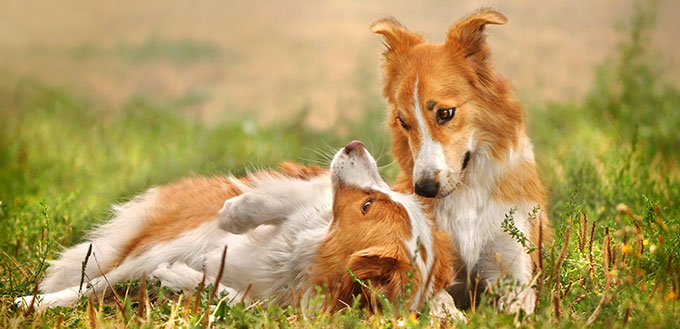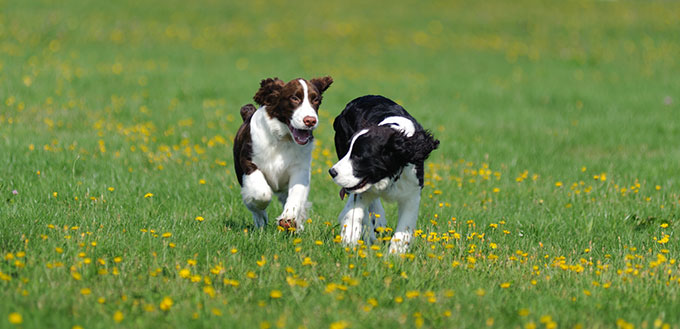In the human setting, siblings stay together for the majority of their lives until they are old enough to leave home. By that time, they are very familiar with each other and can recognize themselves after some time apart. Dogs do not always get the opportunity to stick around siblings long enough because of human interference. At a young age, puppies are separated from their families into new homes to build new families. It sometimes makes you ask, ‘Do dogs remember their siblings?’ Or more appropriately, ‘Can dogs recognize their siblings after they have been apart for a long time?’ Even though science does not have all the answers, there are a few theories that aim to explain what happens between dog siblings after years of separation. In this article, some of these explanations will be explored to give you an idea of the processes dogs go through during reconciliation.
What Influences Whether Dogs Recognize Siblings?
Dogs naturally are pack animals, and their first pack constitutes their parents and siblings. They prefer to do things together as a way of survival and a way to develop their personalities. Factors that influence whether a dog will recognize their siblings later is how long and well they bond with their pack members. There is a critical socialization phase where they have to be with other members of their pack to be able to recognize them. The duration of the period starts from the third week of birth to about the sixteenth week. It is similar to the human child who won’t remember anything about their birth family if they are separated within the first week of birth. Memories created at a younger age are more likely to stay with the animal and help them to recognize their siblings later on. The quality of the time also spent matters, and there has to be some bonding for there to be any recognition. The family should have played a lot together and engaged in other activities together for there to be imprinting. They form better memories out of that interaction which they carry through their life.
How Do Dogs Recognize Their Siblings?
- Scent
One way that dogs recognize their siblings is through their smell. The interactions that they have with their brothers and sisters allow them to register smells that can be recollected later. Usually, dogs smell different from each other, and so they can record the unique smell of their siblings. Dogs have senses of smell that is 10,000 to 100,000 times stronger than humans, and so it is easy for them to catch scents. This quality makes it possible for them to identify their littermates that they were separated from even years later. Research has shown that dogs recognize smells and use it as a way of identifying their relatives. In an experiment, two towels were impregnated with two different scents, one belonging to their relatives and one of a separate dog. The dogs chose the towel with their relatives scent 82% more than the unrelated dog. When they are reintroduced to the smell, their memories are triggered, and they might show signs of remembering the other dog. This goes to say that scent cues are essential for dog siblings’ recognition and prove the idea that a dog’s nose knows it all.
- DNA
This theory has no evidence to back it, but it is a decent explanation for dogs recognizing siblings. It is the idea that dogs may be able to identify their DNA when they’re in the presence of their sibling and is explained in different ways. First, the assumption is that, like humans, it is embedded in their DNA to not mate with their family members. This will mean that they have to be able to recognize their relatives in order not to mate with them. This promotes the idea that dogs can identify through their instinct when they have the same DNA. It also postulates that dogs have the impulse to protect their DNA and so contact with siblings will make them protective. This is suggested by evolutionary theorists who suggest that living organisms are pre-programmed to ensure the survival of their DNA for their next generation. This theory will make sense only if the dog can recognize their sibling.
Signs Your Dog Recognizes Its Siblings
Dogs cannot think about whether another dog is their siblings or not, they may show some behavior that indicates they may recognize them. Based on the theories of how dogs know siblings, one sign is that they sniff the other dog a lot. They may be doing this to confirm whether or not the familiar smell is what they think it is. Smells stick in dogs’ memory for a long time and so they rely on that to identify who they know. Once the dog confirms the scent, they will be more calm and comfortable around the other dog. If you know dogs, you understand how jumpy they can get around other dogs. This changes when the dog identifies the other as their sibling. You’ll also notice a different behavior in your dog than how they react to other strange dogs even though it is not always the case. These other behaviors include wagging the tail, being more alert, and staring a lot at the other dog. They may be trying to process information flooding it or are generally excited. You might also notice your dog staying unusually close to the other dog, maybe to make up for the lost time.
To Summarize
There is nothing heartwarming than when two individuals that were separated find each other and reunite. But do dogs enjoy the same luxury of recognition as humans do? To some extent, they do; they use different channels like scents to identify their own. The depth of a dog’s memory has not been fully exploited by science and there is a lot to learn. However, the information available so far helps to understand the interactions between dogs. When you notice your dog has found a long lost relative, give them space to catch up, while ensuring there is no aggression.








